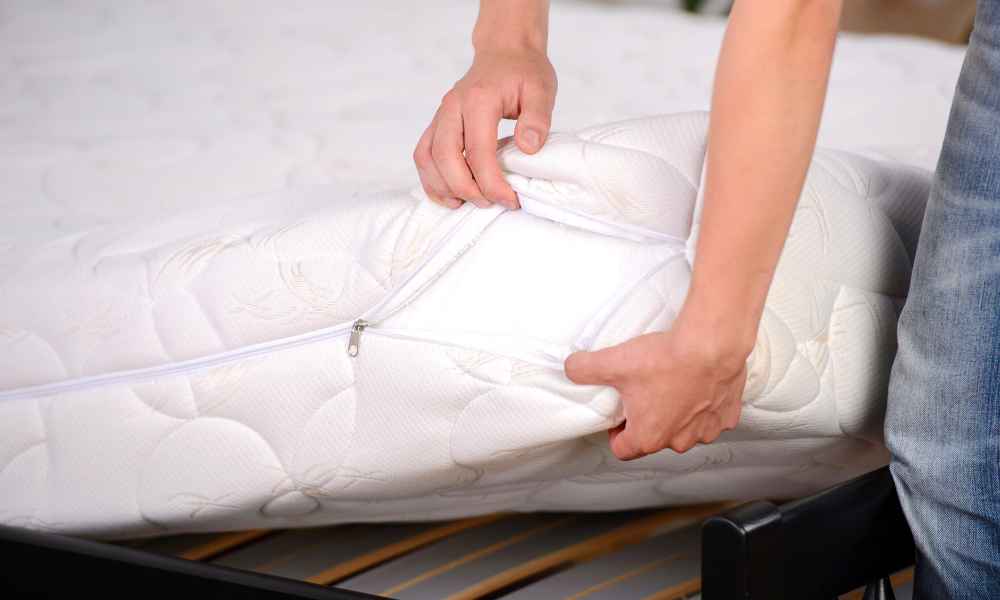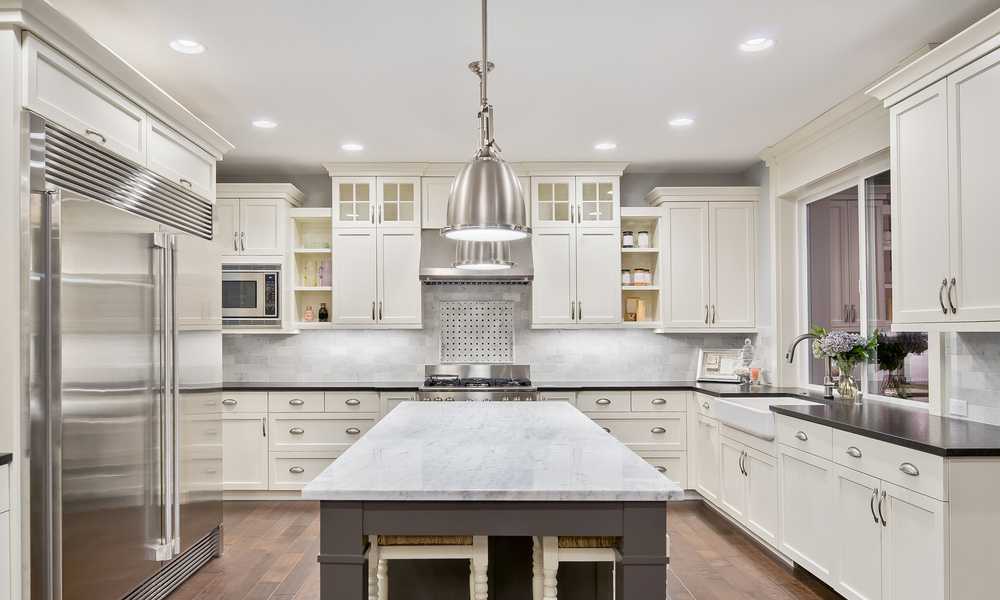Are you tired of staring at your outdated kitchen cabinets every day? Do you dream of a fresh and stylish space that reflects your personal taste? Well, look no further because in this article we will guide you through the process of choosing the perfect kitchen cabinet styles. From sleek and modern to rustic and traditional, we will explore a variety of options that will transform your kitchen into a showstopper. So, buckle up and get ready to embark on an exciting journey filled with endless possibilities for your dream kitchen!
What are the most popular kitchen cabinet styles?
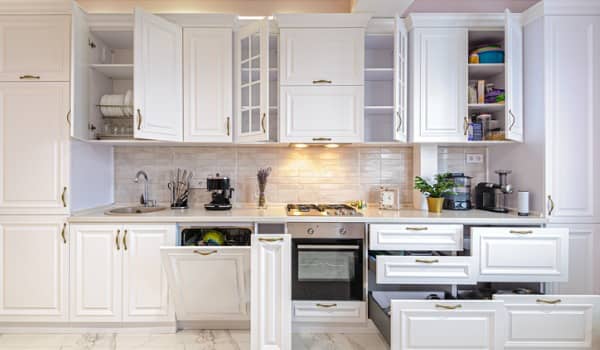
The most popular kitchen cabinet styles often include classic options like Shaker, which features a simple, clean design with a framed inset panel; and traditional raised-panel cabinets, known for their intricate detailing and elegance. Additionally, contemporary and modern cabinet styles are gaining popularity, characterized by sleek, minimalist designs with flat surfaces and clean lines. Transitional cabinets, blending elements of both traditional and modern styles, are also favored for their versatility. Ultimately, the choice of cabinet style depends on individual preferences and the overall kitchen aesthetic.
How do I choose the right cabinet style for my kitchen?

To choose the right cabinet style for your kitchen, consider your personal taste and the overall design theme you want to achieve. Take into account factors like the kitchen’s size, existing décor, and the level of formality you desire. Classic styles like Shaker or traditional cabinets often work well in various settings, while contemporary and modern styles can create a sleek, minimalist look. Transitional styles offer versatility, blending different elements. Sample cabinet doors, consult with designers, and explore design magazines or online resources to help visualize the options and find a style that harmonizes with your kitchen’s aesthetic and your preferences.
Considerations Before Choosing
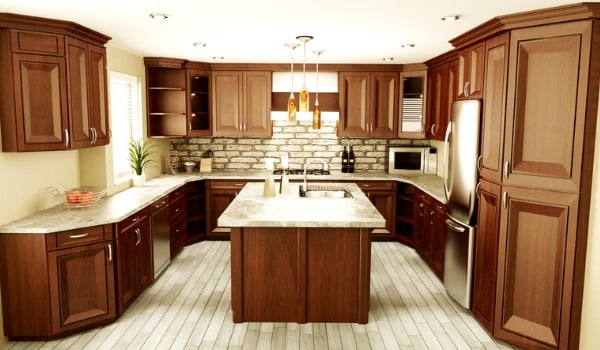
Space and layout assessment
Space and layout assessment is a critical starting point for any interior design project. Begin by measuring the dimensions of the room and taking note of architectural features such as windows, doors, and structural elements. Assess how natural light enters the space throughout the day and consider how you can maximize or manipulate it to enhance the atmosphere. Understanding the flow of the room, traffic patterns, and the purpose of each area within it will help you create a functional and harmonious layout.
Budget planning
Budget planning is the foundation upon which your design choices will rest. Determine how much you’re willing to invest in your project, including not only the cost of materials and furnishings but also potential labor fees and unexpected expenses. Allocate your budget wisely, setting aside funds for both essential elements like flooring and furniture and discretionary items such as decor and accessories. Keep in mind that setting a realistic budget will help you make informed decisions throughout the design process.
Personal style preferences
Personal style preferences are central to creating a space that feels uniquely yours. Take time to explore your design aesthetic and preferences. Are you drawn to clean lines and minimalism, or do you prefer a more traditional, cozy atmosphere? Consider color palettes, textures, and patterns that resonate with you. Collect inspiration from magazines, Pinterest, or design blogs to create a mood board that reflects your style vision. Your space should not only be functional but also a reflection of your personality and lifestyle.
Material options
Material options encompass a wide array of choices that can greatly impact the look, feel, and functionality of your space. When selecting materials for flooring, wall coverings, furniture, and decor, consider factors such as durability, ease of maintenance, and sustainability. For example, if you have young children or pets, you may prioritize easy-to-clean materials. Additionally, explore the tactile qualities of materials, as they can add depth and texture to your design. Be mindful of how different materials can complement or contrast with each other to create a cohesive design scheme.
Popular Cabinet Styles
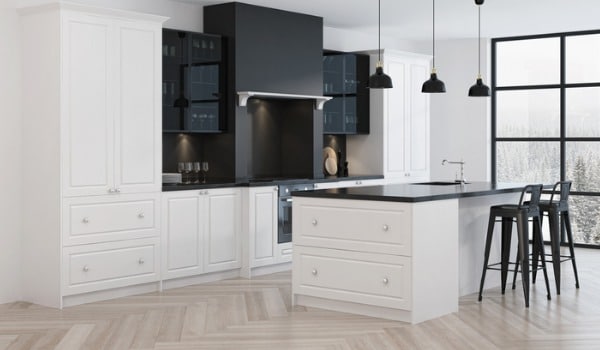
Traditional, Contemporary, Transitional, and Modern
Cabinet styles in interior design and home décor can greatly influence the overall aesthetics and functionality of a space. There are four popular cabinet styles that homeowners often consider: Traditional, Contemporary, Transitional, and Modern. Each of these styles has distinct characteristics, and understanding their pros and cons can help you make an informed decision when designing or remodeling your living spaces.
Characteristics and pros/cons of each style
Traditional Cabinets
- Characteristics: Traditional cabinets are known for their timeless and classic design. They often feature intricate details, raised panel doors, and decorative molding. Wood, such as oak or cherry, is commonly used for these cabinets.
- Pros: Traditional cabinets exude elegance and warmth, making them a perfect choice for homeowners who appreciate a classic look. They can add a sense of nostalgia and charm to any space.
- Cons: Traditional cabinets may appear dated in a modern or minimalist setting. They can also be more expensive due to the craftsmanship and materials involved.
Contemporary Cabinets
- Characteristics: Contemporary cabinets are sleek, minimalist, and often feature clean lines, flat panel doors, and simple hardware. They emphasize functionality and are typically made from materials like laminate, glass, or metal.
- Pros: Contemporary cabinets create a clean and uncluttered look, making them ideal for modern and urban spaces. They are also often more budget-friendly and low-maintenance.
- Cons: Some homeowners may find contemporary cabinets lacking in warmth and character. They may not suit traditional or rustic design themes.
Transitional Cabinets
- Characteristics: Transitional cabinets blend elements of both traditional and contemporary styles. They combine classic features like raised panels with modern touches like clean lines and neutral color palettes.
- Pros: Transitional cabinets offer a balance between classic and modern aesthetics, making them versatile and appealing to a broad range of tastes. They can adapt to changing design trends.
- Cons: Finding the right balance between traditional and contemporary elements can be challenging, and the result may not satisfy those seeking a more distinct style.
Modern Cabinets
- Characteristics: Modern cabinets are all about simplicity, with flat surfaces, minimalistic hardware, and a focus on functionality. Materials like stainless steel, glass, and engineered wood are common.
- Pros: Modern cabinets are highly efficient and ideal for spaces that require a clutter-free and organized appearance. They work well in urban apartments and minimalist homes.
- Cons: Their stark design may come across as cold and sterile to some. Additionally, they may not suit homes with a more traditional or rustic ambiance.
Customization
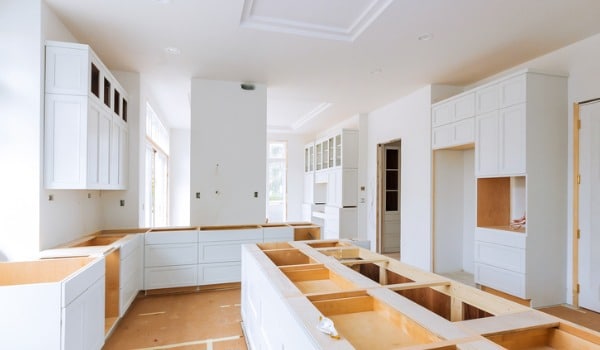
Custom vs. Stock cabinets
When it comes to kitchen or bathroom remodeling, one of the crucial decisions you’ll face is whether to opt for custom cabinets or stock cabinets. Custom cabinets are built specifically for your space and needs, providing a tailored solution that maximizes every inch of available room. They offer the advantage of customization, allowing you to select the exact dimensions, materials, and features you desire. This level of personalization can be ideal for unique spaces or specific design preferences. However, custom cabinets often come with a higher price tag and longer lead times.
On the other hand, stock cabinets are pre-fabricated and come in standard sizes, making them readily available and more budget-friendly. They are a convenient option for homeowners looking for a quick and cost-effective solution. Stock cabinets often come in a limited range of styles and finishes, which can be limiting if you have a distinct aesthetic in mind. While they may lack the bespoke quality of custom cabinets, stock cabinets can still provide functionality and a polished look to your kitchen or bathroom.
Door styles and finishes
The door styles and finishes of your cabinets play a pivotal role in defining the overall aesthetics of your space. The choice of door style can significantly impact the look and feel of your kitchen or bathroom. Traditional raised panel doors exude a timeless charm, while flat-panel doors offer a more modern and minimalist appearance. Shaker-style doors strike a balance between classic and contemporary, making them a popular choice. Your choice of finish, whether it’s natural wood, painted, or stained, can further influence the atmosphere of the room. Natural wood finishes bring warmth and authenticity, while painted finishes can lend a clean and fresh look.
Additionally, the choice of hardware, such as handles and knobs, can add a personal touch to your cabinets. From sleek and stainless steel handles to vintage and ornate knobs, there are endless options to complement your chosen door style and finish.
Hardware and Accessories
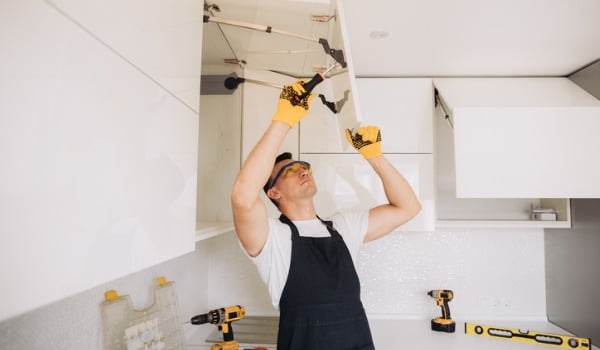
Knobs, handles and pulls
The choice of knobs, handles, and pulls for your cabinets and drawers is a small yet impactful detail that can significantly enhance the overall look and functionality of your space. These hardware elements serve both practical and aesthetic purposes.
- Knobs: Knobs are the simplest and most straightforward option. They are typically small, single-point fixtures that are easy to grasp. Knobs can range from sleek and modern to ornate and traditional, making them suitable for various design styles.
- Handles: Handles are elongated fixtures that provide a larger area to grip. They come in various shapes and sizes, allowing for a more comfortable and ergonomic experience. Handles can be contemporary and streamlined or decorative and intricate, depending on your design preference.
- Pulls: Pulls are similar to handles but offer even more space to grip, making them especially useful for larger and heavier drawers. Pulls come in a wide range of styles, including bar pulls, cup pulls, and bail pulls, allowing you to customize the appearance of your cabinets.
Interior organizational accessories
Interior organizational accessories are the unsung heroes of efficient and well-organized cabinets and drawers. These accessories are designed to optimize your storage space, making it easier to keep your kitchen or bathroom clutter-free. Pull-out shelves are a boon for base cabinets, ensuring that items stored at the back remain accessible. Drawer dividers help you neatly organize cutlery and utensils. Lazy Susans make the most of corner cabinets by enabling easy access to items deep within. Pull-out spice racks keep your seasonings within reach during cooking, while concealed pull-out trash and recycling bins maintain a clean and tidy appearance. Drawer inserts are customizable trays or compartments that keep your drawers organized. These interior accessories should be chosen based on your specific storage needs, enhancing both the practicality and tidiness of your living space.
Maintenance and Care
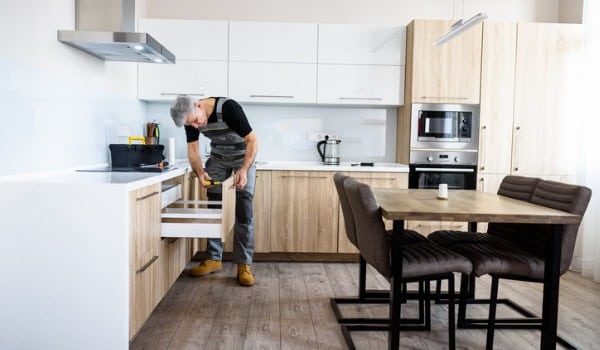
Maintenance and care are essential for preserving the longevity and appearance of your cabinets and ensuring they remain functional. Regularly clean surfaces with a mild, non-abrasive cleaner and soft cloth, avoiding harsh chemicals that could damage finishes. Tighten loose hardware, hinges, and screws as needed. Be mindful of moisture and temperature changes to prevent warping or cracking, and consider using cabinet liners or organizers to protect interior surfaces. Properly store cleaning supplies and chemicals away from cabinets, and avoid excessive weight on shelves to prevent sagging. By following these simple practices, you can keep your cabinets in excellent condition for years to come.
Conclusion
Choosing the perfect kitchen cabinet style is an important decision that requires careful consideration. By taking into account factors such as personal style, budget, and functionality, homeowners can ensure that they select cabinets that not only enhance the overall aesthetic of their kitchen but also meet their practical needs. Whether opting for traditional, modern, or transitional styles, there are countless options available to suit every taste and preference. Investing time and effort into researching and exploring different cabinet styles will ultimately result in a kitchen space that is both visually appealing and highly functional. So don’t rush the decision – take the necessary time to choose the perfect kitchen cabinet styles for your home.
FAQ
How do I incorporate two different cabinet styles in my kitchen design?
Incorporating two different cabinet styles into your kitchen design can create a visually interesting and dynamic space. To achieve this, consider using one style for the primary cabinets and another for accents, such as an island, a pantry, or open shelving. Ensure a unifying element, such as a consistent color palette, hardware, or countertop material, to tie the styles together cohesively. This combination allows you to showcase your personal style and add contrast while maintaining overall harmony in your kitchen design.
What cabinet style is timeless and won’t go out of fashion quickly?
A cabinet style that is considered timeless and less likely to go out of fashion quickly is the Shaker style. Shaker cabinets feature a simple and clean design with a framed inset panel, making them versatile and adaptable to various kitchen aesthetics. Their minimalist yet classic look has been popular for centuries and continues to be in vogue due to their enduring appeal and ability to complement both traditional and modern kitchen designs. Choosing neutral colors and quality materials can further enhance their timelessness.
Can I change the cabinet style without replacing the entire cabinet?
Yes, you can change the cabinet style without replacing the entire cabinet by employing various techniques such as refacing, repainting, or adding new cabinet doors and hardware. These cost-effective methods allow you to update the appearance of your cabinets while keeping the existing cabinet structure intact, saving you both time and money in kitchen or furniture renovations.
Are there eco-friendly cabinet-style options available?
Yes, there are eco-friendly cabinet-style options available. You can choose cabinets made from sustainable materials like bamboo, reclaimed wood, or FSC-certified wood, which are sourced responsibly. Additionally, selecting low-VOC (volatile organic compounds) finishes and adhesives for your cabinets can minimize harmful emissions. Opting for cabinet designs that prioritize energy-efficient manufacturing processes and minimal waste generation further contributes to eco-friendliness in your cabinet choices.
What should I consider when choosing cabinet hardware to complement my chosen style?
When selecting cabinet hardware to complement your chosen style, consider factors such as the overall aesthetic, color scheme, and materials used in your space. Ensure that the hardware aligns with the style, whether it’s traditional, modern, rustic, or another design theme. Pay attention to finishes that harmonize with your cabinetry and surrounding decor. Additionally, think about functionality and ergonomics, as hardware should be easy to use. Ultimately, the hardware you choose should enhance the visual appeal of your cabinets while seamlessly integrating into the broader design scheme of your room.


